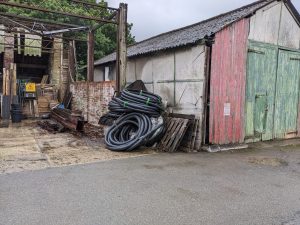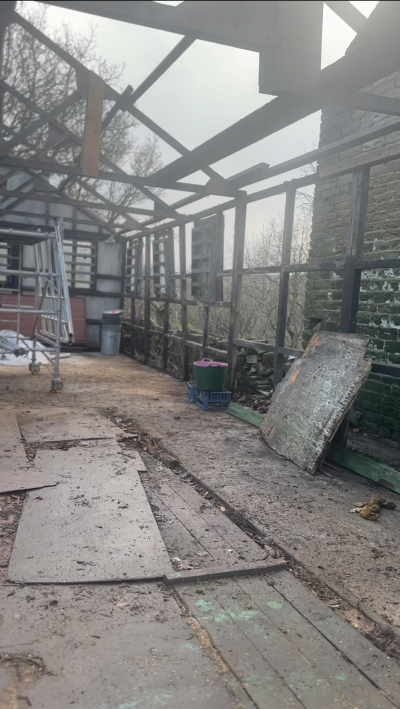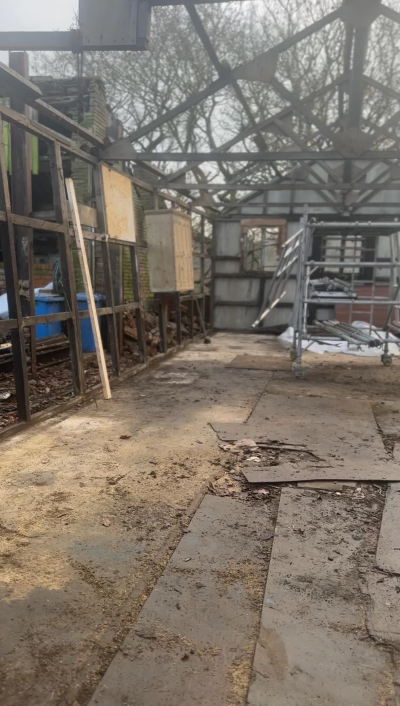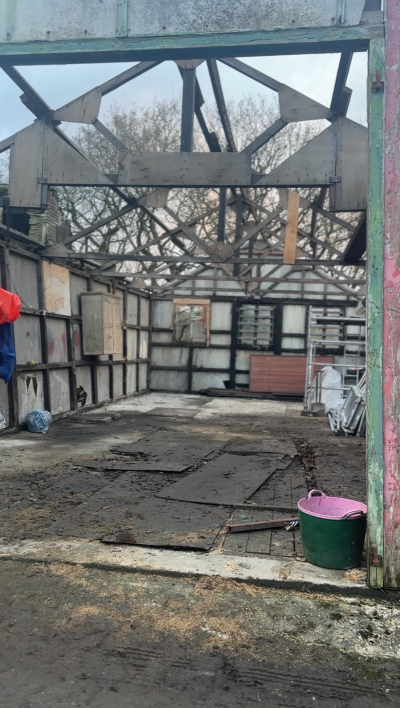
Asbestos, once hailed as a versatile and durable building material, has in more recent times been implicated in severe health problems. Its widespread use in construction, insulation, and various other industries too has left a legacy of potential hazards to those exposed to it.
As Architects, we often come across materials that could potentially contain asbestos in various projects that we are involved with, and regularly advise our clients on how to manage this safely.
At the bottom, we’ve included a recent project of ours which involved the removal of asbestos.
In this blog, we’ll delve into the crucial topic of asbestos identification, removal, shedding light on the reasons behind its necessity, the removal process, and the significance of entrusting this task to professionals.
Understanding the Danger:
Asbestos, composed of microscopic fibres, can become airborne when disturbed, posing a serious health threat when inhaled. Prolonged exposure to asbestos fibres has been linked to severe respiratory diseases, including asbestosis, lung cancer, and mesothelioma. Recognizing the dangers, governments and regulatory bodies worldwide have imposed strict guidelines to manage and endeavour to eventually eliminate asbestos in all buildings and structures.
The Necessity of Asbestos Removal:
Health Protection:
The primary reason for asbestos removal is to safeguard human health. Asbestos-containing materials, if left undisturbed, may not pose an immediate threat. However, during renovations, demolitions, or natural wear and tear, asbestos fibres can be released into the air, endangering the health of occupants and workers.
Legal Compliance:
Adhering to guidance and legislation, such as the Control of Asbestos Regulations 2012 in the UK, is imperative. Many countries have stringent laws governing the identification and removal of asbestos in buildings. Failure to comply with these regulations can result in legal consequences, financial penalties and of course also puts people at risk.
The Asbestos Removal Process:
Assessment and Inspection:
Trained professionals should be appointed to conduct a thorough inspection to identify any potential asbestos-containing materials. This involves examining all building materials present, the air quality, and any potential areas of contamination.
Risk Management:
Based on the assessment, a risk management plan should then be developed. This plan outlines the scope of work, safety measures, and the schedule for asbestos removal.
Safe Removal Procedures:
Certified asbestos removal specialists employ strict safety protocols, including the use of protective clothing, specialised equipment, and containment measures to prevent the spread of asbestos fibres.
Proper Disposal:
Asbestos waste must be carefully packaged and disposed of in accordance with regulatory guidelines. Specialised disposal facilities are designated for asbestos-containing materials to minimise their environmental impact.
Choosing Professional Asbestos Removal Services:
Attempting to remove asbestos without proper training and equipment can lead to increased health risks and legal complications. Hiring certified asbestos removal professionals ensures the safe and efficient removal of asbestos from your property. These experts possess the knowledge and experience to handle asbestos-related challenges while minimizing risks to occupants and the environment.
The safe removal and/or management of asbestos is a critical step in creating a safe and healthy living or working environment. Prioritising the well-being of individuals and complying with legal obligations are paramount. By understanding the dangers of asbestos, recognizing the necessity of management and removal, and entrusting the task to qualified professionals, we can all contribute to a safer and healthier future for everyone.
Below, a recent project of ours which involved the removal of asbestos which was carried out by an external company safely and professionally.










